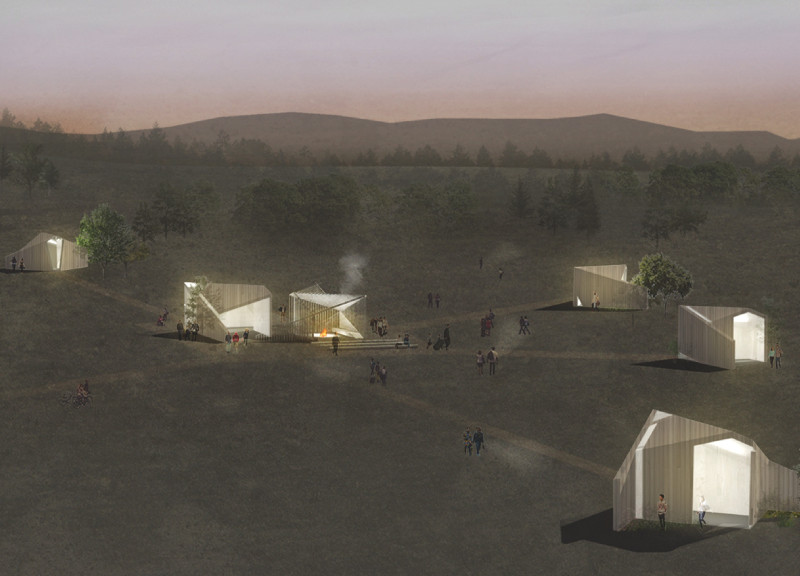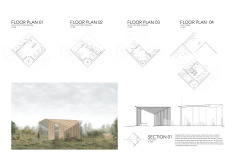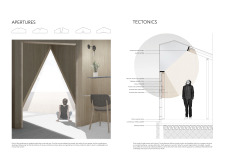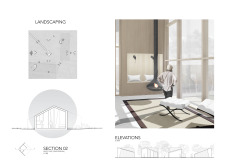5 key facts about this project
Saulė is designed as residences for visiting poets, located in the culturally rich environment of Latvia. The project highlights the deep connection between individuals and the natural world. The design concept emphasizes themes of harmony, health, unity, and light. This creates spaces that encourage both personal reflection and community interaction among artists.
Cohesive Layout
The residences are arranged to draw attention toward a central gathering area, which acts as the core for community engagement. This layout provides opportunities for social interaction while also honoring the need for individual solitude. Each residence is inspired by the concept of the austra's koks, depicting a sense of interconnectedness. Together, they represent branches emerging from a common trunk, symbolizing unity within diversity.
Materiality
The choice of materials is an essential aspect of the design. The buildings primarily use wood, which aligns with local traditions and sustainable construction practices. The warmth and texture of wood enhance the experience of the spaces. Plywood serves as wall sheathing, adding versatility and efficiency while maintaining the distinctive appearance of the huts.
Light and Connectivity
Glazing systems are thoughtfully placed to maximize natural light. These openings create visual connections between the interiors and the surrounding landscape. Residents benefit from the changing light conditions during the day, which fosters a strong link between indoor and outdoor environments.
Architectural Language
Vertical wood slat cladding adds to the overall design. This feature serves as both a practical and aesthetic barrier, blending the buildings with their natural surroundings. The architecture respects traditional Latvian values while responding to modern needs, providing a supportive environment for creativity and communal living.
Natural materials and careful detailing create a warm atmosphere. Each residence tells its own story while contributing to a shared community experience, marked by the gentle interplay of light and shadow across the architectural forms.






















































